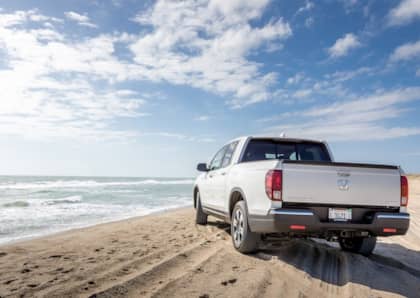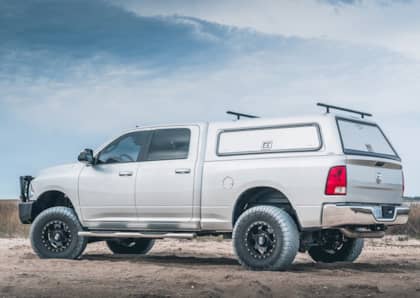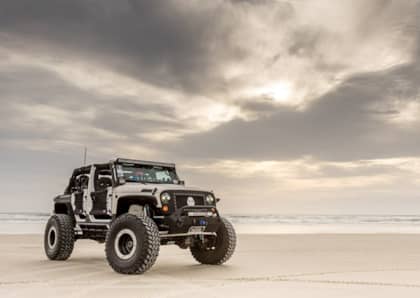How To Drive On The Sand | Inside Line
Long before recreational four wheeling was a mainstream hobby; beachgoers would dodge the crowds by finding areas of shoreline that you could drive on. All across the United States, you’ll find legal access points that allow you to drive on and sometimes camp on the beach. On this Inside Line, we’re breaking down what you need to know before your tires hit the sand. While you can watch this episode in its entirety on our YouTube channel, we’re highlighting the major points in the article below.
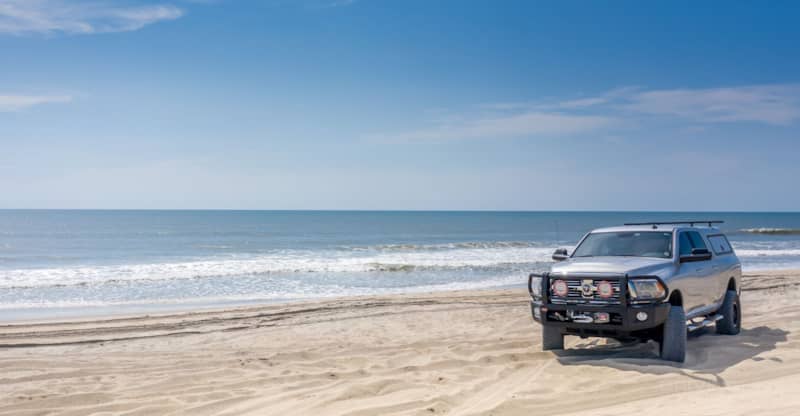
Dayton Beach
It may be the most well-known beach driving destination in the United States. We’re talking about none other than historic Daytona Beach, Florida. The good news for those looking to try out the popular sand strip is that the Daytona Beach sand is extremely hard packed. This means you can often cruise the shoreline in two-wheel drive. We’ve seen everything from Ford Mustangs to Honda Civics on the sand. We mention this primarily because this is the exception, not the rule. Most beaches you will drive on will have much softer sand, requiring a little bit of vehicle prep and four-wheel drive.
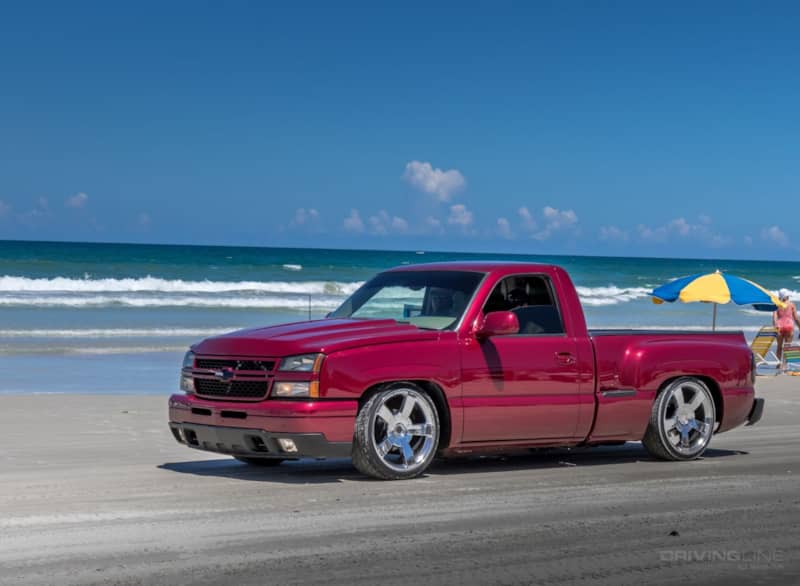
Airing Down
Before your vehicle touches the sand, the first thing you need to do is air down your tires. This will increase the footprint of the vehicle in the sand, which will allow it to float atop the sand more easily. Many beach areas will have a parking lot for you to air down just before you hit the beach. So, you don’t have to travel far on the pavement with low tire pressure. Now, how low you'll need to air down can vary among vehicles.
On a midsize truck or SUV, dropping between 12-15PSI should be more than adequate. One something heavier, such as our Cummins-powered Ram, we recommend between 18 and 25 psi. We’re running a larger-than-stock 35x12.50R17 Nitto Ridge Grappler, which already gives us a larger footprint. This larger tire helps tremendously not only by having an increased height over stock, but the wider tire helps increase the footprint in the sand. The key thing to remember is less air pressure the better. However, we do NOT recommend dropping below 10 psi as you run the risk of the tire coming off of the wheel.
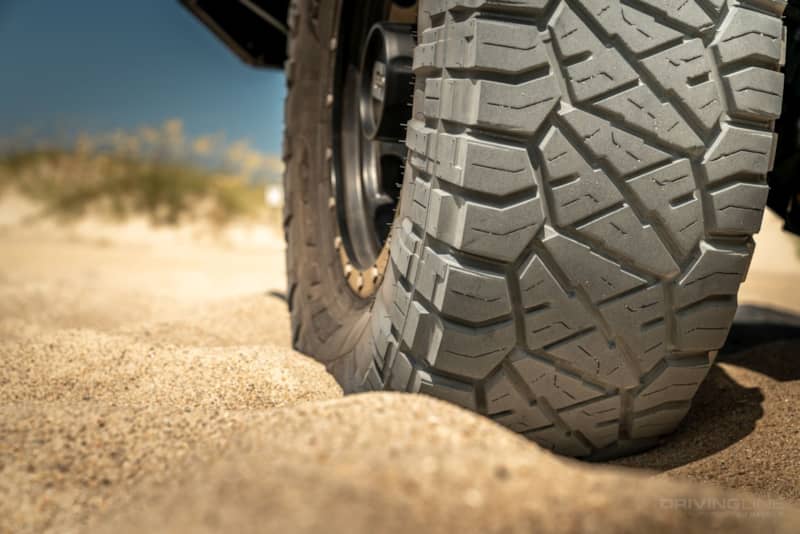
Traction Control
Most modern vehicles are equipped with some sort of traction or stability control system. These can often be defeated by pressing down a button on the dash for a few seconds when the vehicle is in four-wheel-drive high range. Typically, it’s automatically defeated when the vehicle is placed into low range. The reason this is important is that your vehicle’s wheelspeed can fluctuate rapidly in the sand, which may cause the vehicle to think it is sliding on the pavement. This will cause it to cut power to the tires and apply the brakes in many cases. This can get you stuck in a hurry.
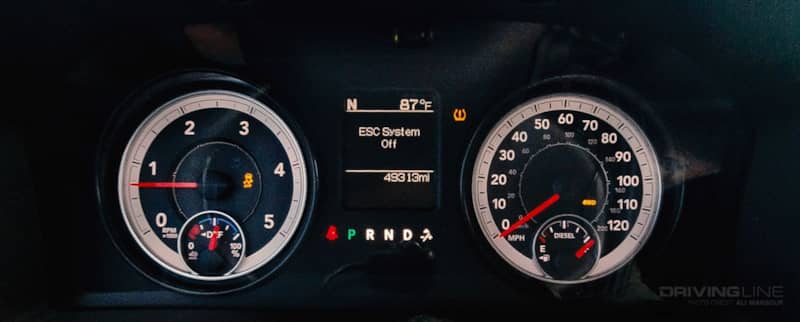
High or Low
Driving in the sand puts a fair amount of strain on your powertrain. You need the tires moving quickly to help propel you across the sand. Momentum is the key to sand wheeling, and high range is ideal for that. This is why vehicles such as the Honda Ridgeline and Subaru Outback do perfectly fine in the sand. Despite not having a low-range option, these vehicles can often cruise the beach with ease thanks in part to intelligent all-wheel-drive systems and lowering the air pressure in the tires.
If your vehicle is fit with oversize tires, and is struggling to move along in high range, by all means, switch into low range. The gear reduction will help with the added resistance, but you will likely need to place the transmission into a higher gear to allow for an increase in wheelspeed. Each vehicle has its own limits and you will need to be mindful of engine and transmission temps when driving in the sand. For most, the combination of low air pressure and four-wheel-drive high range will be a winning combination.
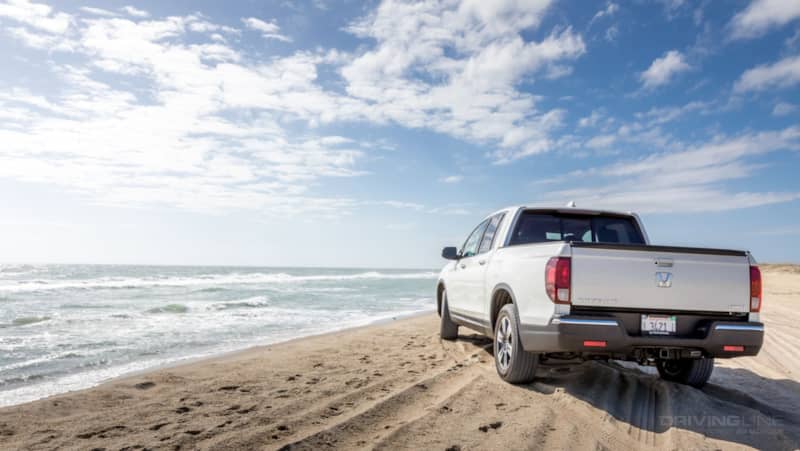
Keep Moving
Ok. You don’t need to jump your vehicle, but we can’t emphasize the concept of momentum enough. You don’t need to speed down the beach like a madman, but you will need to keep a steady pace. Also, avoid making any abrupt stops and never slam on the brakes in the sand. Plan your moves well in advance and make gradual, not sharp, vehicle movements.
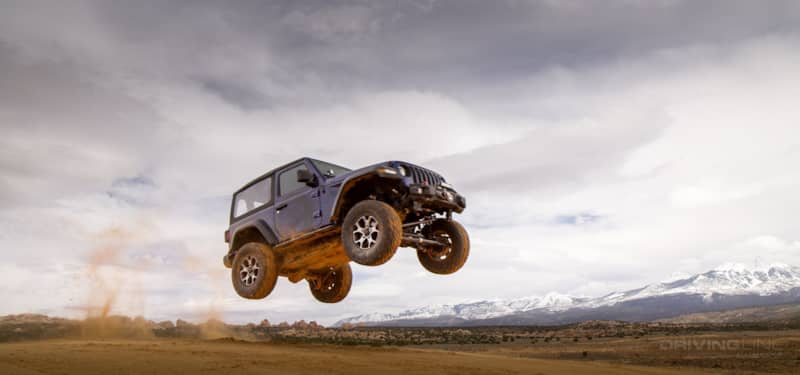
Pick Your Line
Soft sand can rut quickly with high traffic. These ruts can be deceivingly deeps, so be mindful of how much ground clearance your vehicle has. If you find the ruts are getting too deep, give it a little extra power and move to a new set. Don’t be afraid to make your own ruts if necessary.
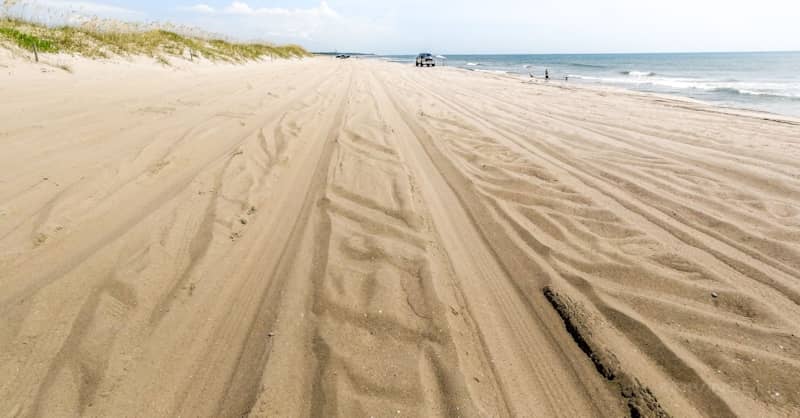
Plan For The Worst
Sunscreen, water, snacks, and a recovery plan need to be in your vehicle. A quick Google search will often show what recovery services operate on the beach. In many coastal towns, AAA will often work with local recovery services to get you off of the sand. These can be very pricey, so plan accordingly. Also, know the tide schedule. Some areas of the beach may be impassible during high tide. This could leave you stuck waiting for hours for the tide to fall or even worse, with your vehicle taking on water.
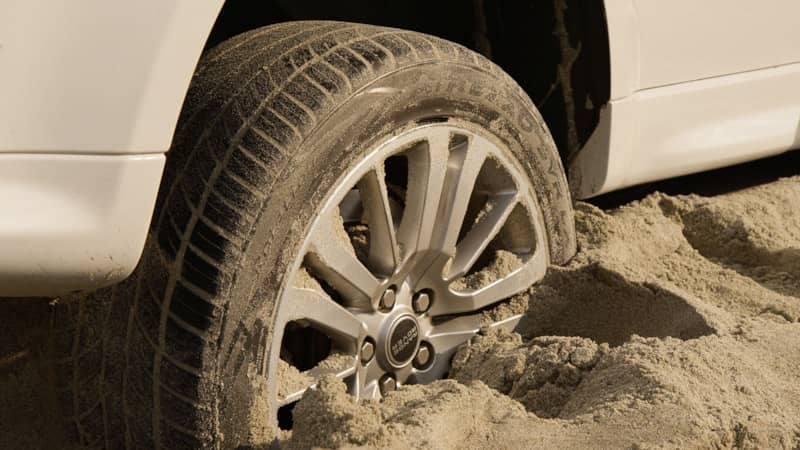
Tires
Your tires can play a big part in how well your vehicle moves over the sand. Generally, an all-terrain tire will outperform a mud-terrain tire in this arena. This is largely due to the fact that all-terrain tires tend to dig just enough to keep you going, but not so much as to pull you down. We’ve had great luck with the Nitto Terra Grappler G2 in the past on the beach, as well as the slightly more aggressive Ridge Grappler shown here.
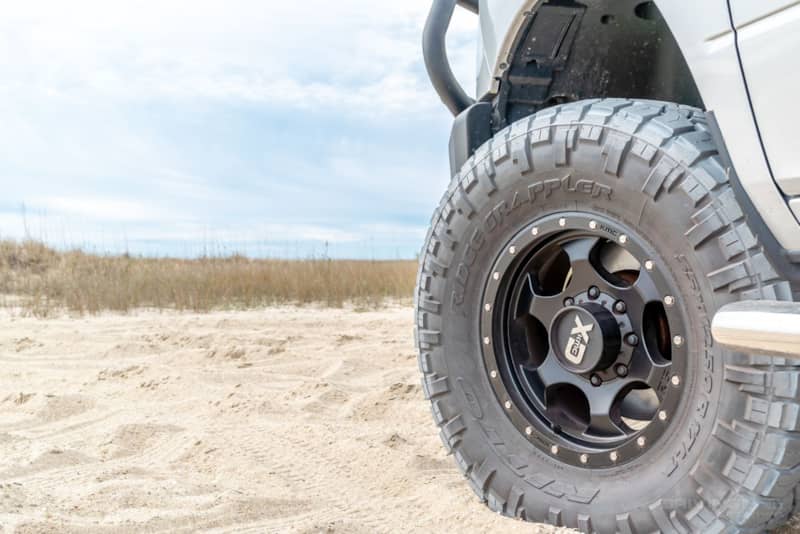
Find out why air pressure is so important for going off-road




